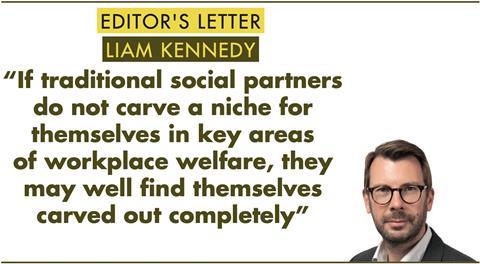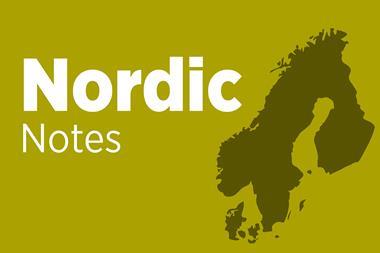Social partnership can mean different things in many countries, or very little at all in others. The concept resonates most in continental Europe, where a tripartite framework of social-market capitalism has taken root since the second world war, in which corporatist decision-making involving government, labour and employer voices is entrenched.

At the ‘commanding heights’ of the economy, there is sometimes state or regional government ownership of key companies or collective wage bargaining in industrial sectors. Key institutions like the Social and Economic Council in the Netherlands can be instrumental in setting and guiding aspects of social policy, including workplace pensions.
At micro level, social partnership embraces worker representatives on boards, works councils and social-partner-driven pension funds.
For the concept to work, social partnership needs effective representation of both workers and employers, with trade unions and traditional employer associations acting as the ‘voice’ of their constituencies.
But the broad decline in union membership across the continent and the membership crisis in the UK’s Confederation of British Industry threaten to undermine the status of those bodies and their licence to ‘speak’ for the constituency they represent (or in many cases don’t represent at all).
In today’s workplace, career breaks, frequent employer changes and self-employment are common. Traditional models of employment – a male working for decades at the same company – have long broken down, to the extent that it no longer makes sense even to talk of traditional working patterns.
Recently, changing labour markets have boosted employment levels and wage-bargaining power, but this does not necessarily imply a resurgence in social partnership or that collective decision-making will increase in relevance.
At the recent conference of the Brussels-based European Association of Paritarian Institutions (AEIP), delegates discussed the future role of the social partners in pensions. This is far from clear.
Changes in the nature of employment, combined with pension reforms, the rise of defined contribution pensions and the attitude of unions all conspire to challenge the positive role social partners can play in workplace pensions.
In the Netherlands, although the winning party of Geert Wilders wants to scrap the new pension law completely, the New Social Contract party has openly questioned one of the central tenets of the new pension system, the transfer of accrued benefits to a DC system. Some would prefer ‘grandfathering’ of the accrued rights and to start afresh with future accrual in a DC pension.
This would be much simpler but many think it would undermine the social solidarity aspects of the planned new system.
In any case, there is no participation route for the Dutch self-employed in the second-pillar pension model.
Germany’s IG Metall, the trade union representing 2.2m workers in the metal sector, has rejected the government’s ‘social partner’ defined contribution pensions model. The metal sector in Germany already offers a well-regarded social-partner run pension scheme for employees, called MetallRente).
The rejection by a leading German union of such an important part of the government’s pension saving architecture is a blow.
Numerous examples demonstrate that social partners can play a key role in creating and shaping good pension institutions – well run and embedding the interests of members in a not-for-profit framework. But across Europe, there has been a remarkable failure of imagination in many countries in expanding the role of social partners in pensions.
If social partners cannot or will not help boost second-pillar pensions, the state has traditionally acted as a guarantor of retirement income through the state system and the private sector has provided third-pillar products. Or employers offer their own pensions and savings schemes.
State pension benefits are likely to diminish as a combination of budgetary and demographic pressures constrain first-pillar pension systems. And private pension and savings are often expensive and hard to tailor to specific employment groups and cohorts.
In some cases, such as with the self-employed, workers may have to find new ways to ‘represent’ themselves. But that is exactly what groups of self-interested workers did in the nineteenth century when they set up not only trade unions but a social infrastructure of mutual lenders and Co-operative societies.
And if traditional social partners do not carve a niche for themselves in key areas of workplace welfare, they may well find themselves carved out completely.
Liam Kennedy, Editor
liam.kennedy@ipe.com























No comments yet